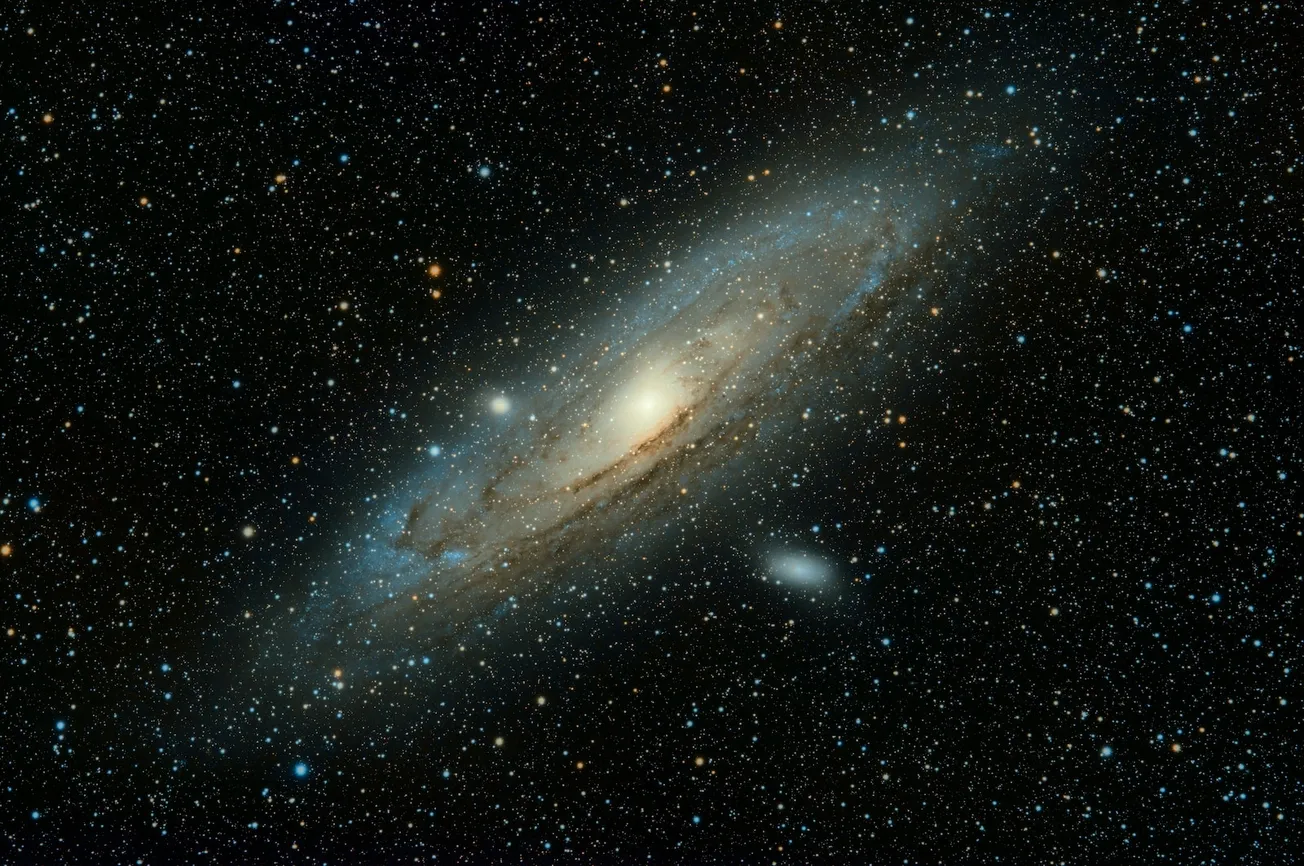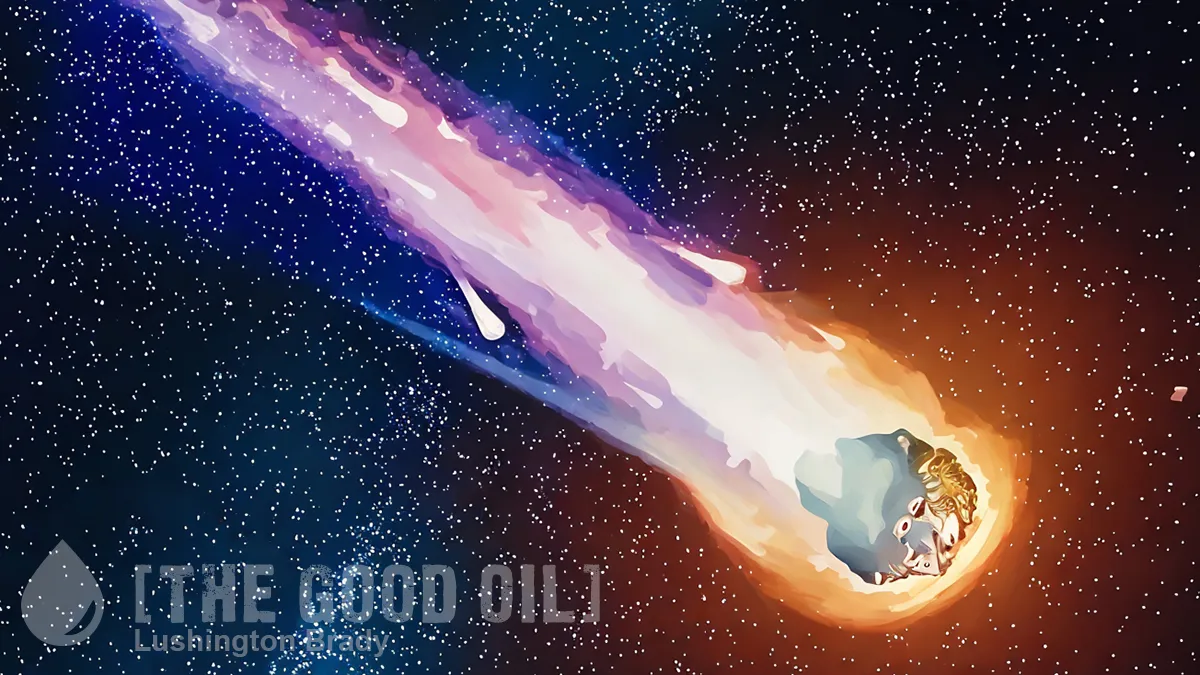As H. P. Lovecraft wrote, in his famous opening sentences of The Call of Cthulhu: “We live on a placid island of ignorance in the midst of black seas of infinity, and it was not meant that we should voyage far”. Certainly, we’ve barely dipped our toes in the shallows of the cosmic ocean. Human beings have not ventured beyond our own Moon; even the next-door-neighbour planet, Mars, is a so-far insurmountable distance away.
Our robotic probes have gone a little further. After decades in space as the fastest-moving objects ever made by humans, the Voyager probes, only completely left the Solar System for truly interstellar space in 2012 and 2018. Barring interstellar incidents, these probes will pass (relatively) close to other stars sometime in the next tens of thousands or millions of years.
Within the Solar System, though, a flurry of robotic probes are venturing to not just the Moon, but comets and asteroids. Some of them are even coming back, bearing precious scoops of cosmic dust.
One such probe parachuted a capsule safely back to Earth last Sunday, after a seven-year voyage to an asteroid, Bennu, and back. Sealed inside the capsule is half a cup or so of rubble — of inestimable scientific value.
To everyone’s relief, the capsule was intact and not breached, keeping its 4.5 billion-year-old samples free of contamination. Within two hours of touchdown, the capsule was inside a temporary clean room at the Defense Department’s Utah Test and Training Range, hoisted there by helicopter.
The sealed sample canister will be flown on Monday to NASA’s Johnson Space Center in Houston, where it will be opened in a new, specially designed lab. The building already houses the hundreds of pounds (kilograms) of moon rocks gathered by the Apollo astronauts.
The challenge now is to retrieve the samples from their sealed capsule without contaminating them with terrestrial matter. The cosmic rubble heap that is Bennu has been orbiting the Sun for 4.5 billion years. The couple of hundred grams of pebbles and dust are remnants from the formation of the Solar System itself.
“We can’t wait to crack into it. For me, the real science is just beginning,” said the mission’s lead scientist, Dante Lauretta of the University of Arizona. He’ll accompany the samples all the way to Texas.
Lori Glaze, NASA’s planetary science division director, added: “Those are going to be a treasure for scientific analysis for years and years and years to come.”
Half a cup of rubble may not sound much, but, to date, the biggest sample retrieved from an asteroid, by a Japanese probe, gathered about a teaspoon of dust.
British astronomer Daniel Brown, who was not involved in the mission, said he expects “great things” from NASA’s largest sample return since the Apollo moon landings more than a half-century ago. With these asteroid samples, “we are edging closer to understanding its early chemical composition, the formation of water and the molecules life is based on,” he added from Nottingham Trent University.
The samples won’t just (hopefully) tell us about the earliest days of the Solar System, they may contain vital clues to Earth’s future.
Currently orbiting the sun 50 million miles (81 million kilometers) from Earth, Bennu is about one-third of a mile (one-half of a kilometer) across, roughly the size of the Empire State Building but shaped like a spinning top. It’s believed to be the broken fragment of a much larger asteroid.
During a two-year survey, Osiris-Rex found Bennu to be a chunky rubble pile full of boulders and craters. The surface was so loose that the spacecraft’s vacuum arm sank a foot or two (0.5 meters) into the asteroid, sucking up more material than anticipated.
These close-up observations may come in handy late next century. Bennu is expected to come dangerously close to Earth in 2182 — possibly close enough to hit. The data gleaned by Osiris-Rex will help with any asteroid-deflection effort, according to Lauretta.
Star Advertiser
If, as the probe’s experience so far suggests, asteroids like Bennu are loose, gravelly conglomerations, that may hold particular challenges for any attempt to deflect it from a collision course. It’s one thing, after all, to nudge a hard billiard ball, but try playing billiards with a spongy Nerf ball.
As for returning samples from other Solar bodies, the Perseverance rover has spent two years on Mars collecting samples for a planned return to Earth. So far, though, terrestrial politics have put such plans on hold, after a review board criticised the cost and complexity of the endeavour.









